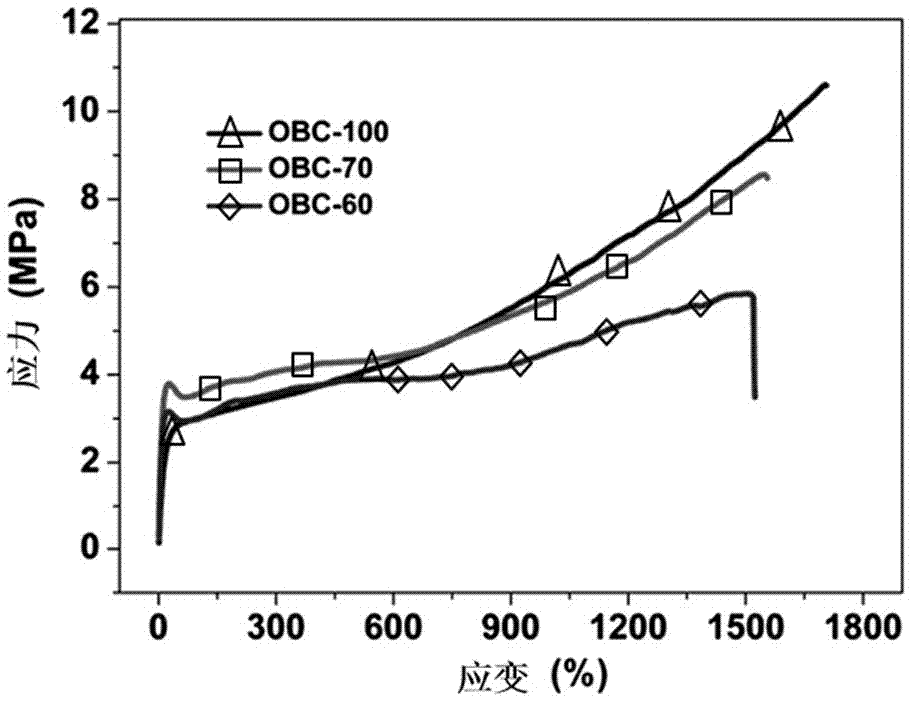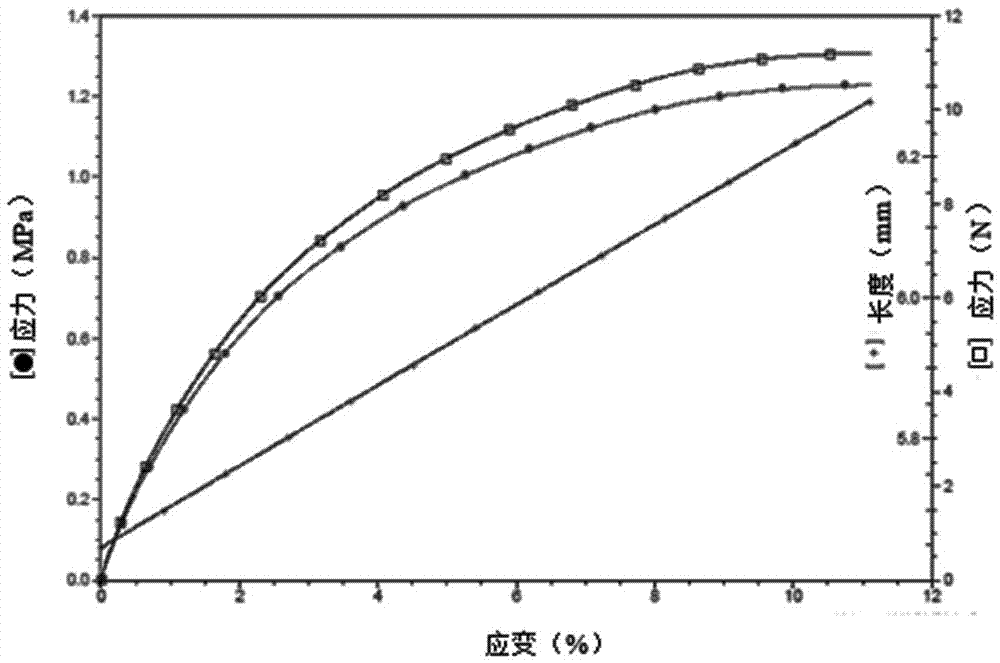Flexible phase-change material for electronic device thermal control
A technology of phase change materials and electronic equipment, applied in heat exchange materials, cooling/ventilation/heating transformation, modification through conduction heat transfer, etc., can solve fracture damage, high surface contact thermal resistance, crystal phase cannot be separated, etc. problem, to increase the use of space and cost, good fit, and improve thermal control performance
- Summary
- Abstract
- Description
- Claims
- Application Information
AI Technical Summary
Problems solved by technology
Method used
Image
Examples
Embodiment 1
[0036] To prepare the flexible phase change material of octadecyl, the specific operation steps are as follows:
[0037] In step (1), 150 g of octadecane and 50 g of olefin block copolymer (OBC) are taken; octadecane is used as a phase change matrix with a phase change temperature of 26.2°C and a latent heat of phase change of 201.6 J / g; OBC is used as a support carrier.
[0038] Step (2), put 150g of octadecane in an oil bath kettle and heat it at a constant temperature at 40°C for about 30 minutes until it completely melts;
[0039] Step (3), add 50g of OBC, the temperature is 170°C, and the speed of the stirrer is set to 30r / min, heat for 30min while stirring, stir the two substances evenly until the OBC is completely melted, and a uniformly mixed molten compound is obtained things. At the same time, the cutter for surface treatment of the phase change material and the mold containing the molten compound were respectively placed on a copper plate at 50°C for preheating.
...
Embodiment 2
[0047] The operation steps for preparing the paraffin-based flexible phase change material are as follows:
[0048] Step (1), take 160g of paraffin, 40g of olefin block copolymer (OBC) and 6g of expanded graphite (EG01). Paraffin is the phase change matrix, the phase change temperature is 52.6°C, and the latent heat of phase change is 210J / g; OBC is the support carrier; EG01 is the thermal conductivity enhancer with a particle size of 282um and an expansion of 550 times. The amount of EG01 is 3% of the total mass of paraffin and OBC.
[0049] Step (2), put 160g of paraffin in an oil bath kettle and heat it at a constant temperature at 60°C for about 30 minutes until it completely melts;
[0050] Step (3), add 40g olefin block copolymer (OBC), set the temperature to 170°C, set the speed of the stirrer to 30r / min, heat for 30min while stirring, stir the two substances evenly until the OBC is completely melted, A molten compound of paraffin wax and OBC mixed uniformly is obtain...
Embodiment 3
[0056] The operation steps of preparing polyethylene glycol-based flexible phase-change materials are as follows:
[0057] Step (1), take 140g of polyethylene glycol, 60g of polyurethane and 10g of carbon nanotubes.
[0058] Polyethylene glycol is the phase change matrix with a relative molecular mass of 10,000, a phase transition temperature of 67.18°C, and a latent heat of phase transition of 187.3 J / g; polyurethane is the supporting carrier; the mass ratio of polyethylene glycol and polyurethane is 70:30. Carbon nanotubes are thermal conductivity enhancers, the model of carbon nanotubes is CNTS107, the diameter is greater than 50nm, and the length is 10~20μm.
[0059] Step (2), put 140g of polyethylene glycol in the kettle body, and heat at 70°C for 30 minutes until the polyethylene glycol is completely melted;
[0060] Step (3), add 60g of polyurethane, set the temperature to 190°C, set the speed of the agitator to 35r / min, turn on the vacuum pump to ensure that the vacuu...
PUM
| Property | Measurement | Unit |
|---|---|---|
| phase transition temperature | aaaaa | aaaaa |
| particle diameter | aaaaa | aaaaa |
| yield strength | aaaaa | aaaaa |
Abstract
Description
Claims
Application Information
 Login to View More
Login to View More - R&D
- Intellectual Property
- Life Sciences
- Materials
- Tech Scout
- Unparalleled Data Quality
- Higher Quality Content
- 60% Fewer Hallucinations
Browse by: Latest US Patents, China's latest patents, Technical Efficacy Thesaurus, Application Domain, Technology Topic, Popular Technical Reports.
© 2025 PatSnap. All rights reserved.Legal|Privacy policy|Modern Slavery Act Transparency Statement|Sitemap|About US| Contact US: help@patsnap.com



